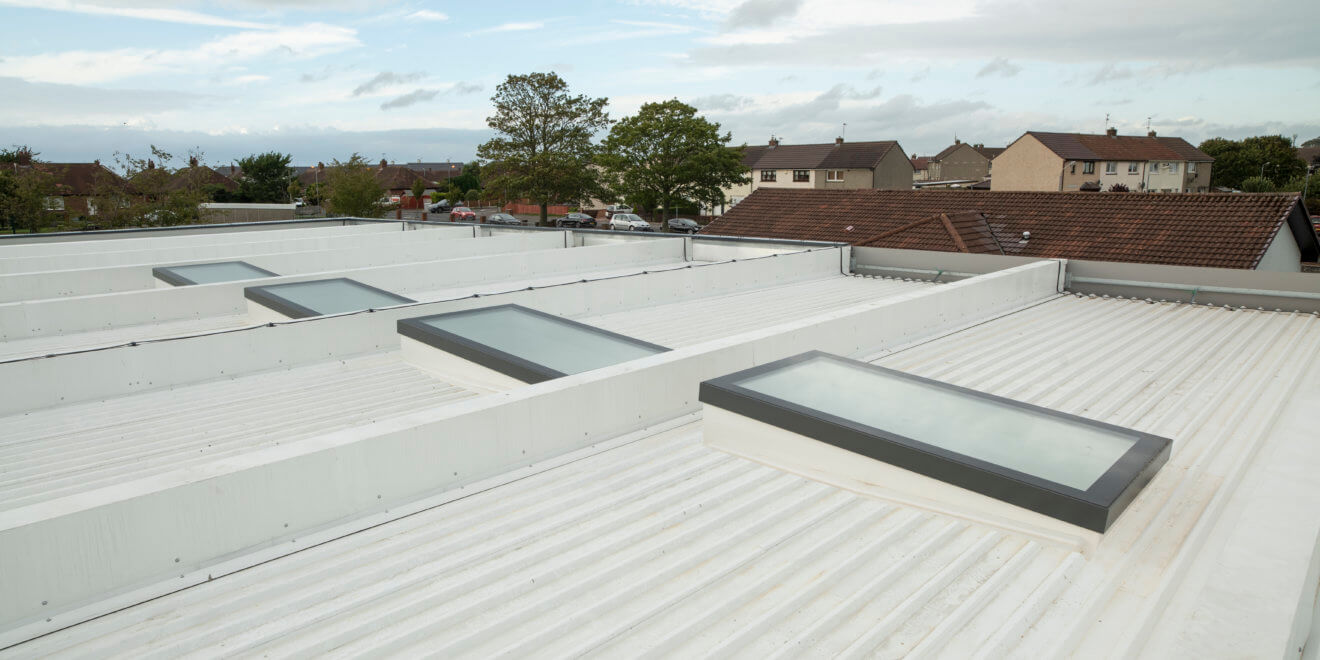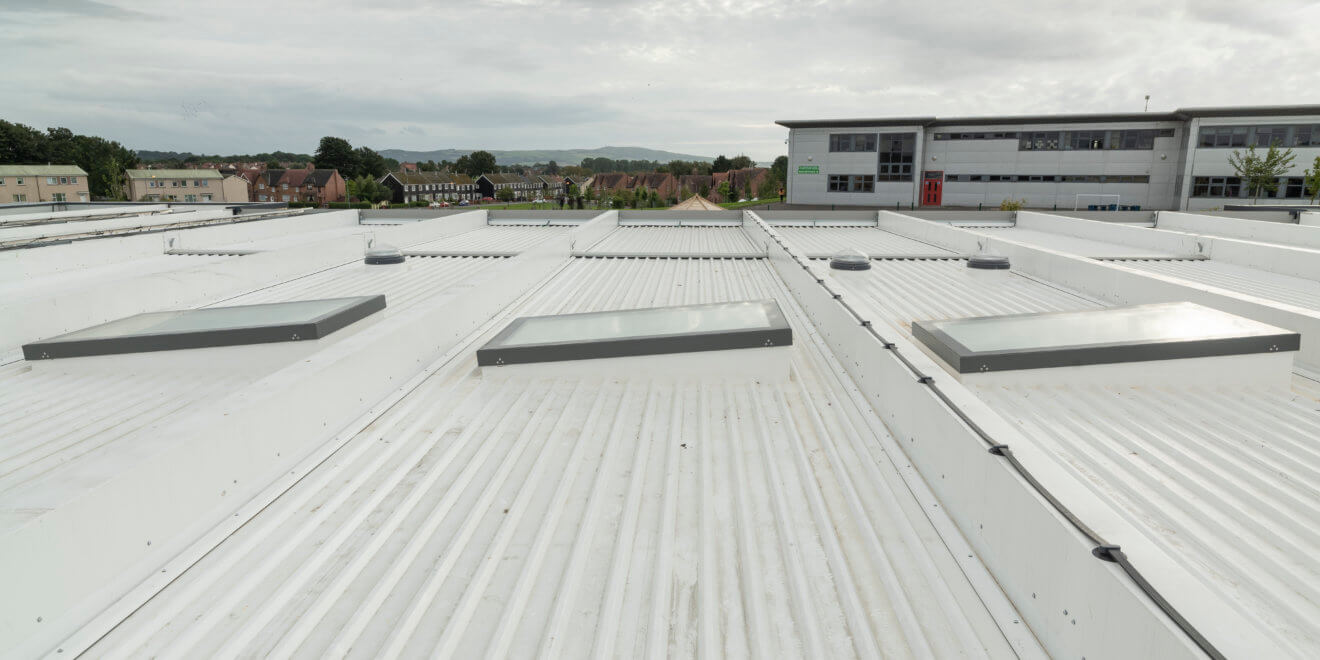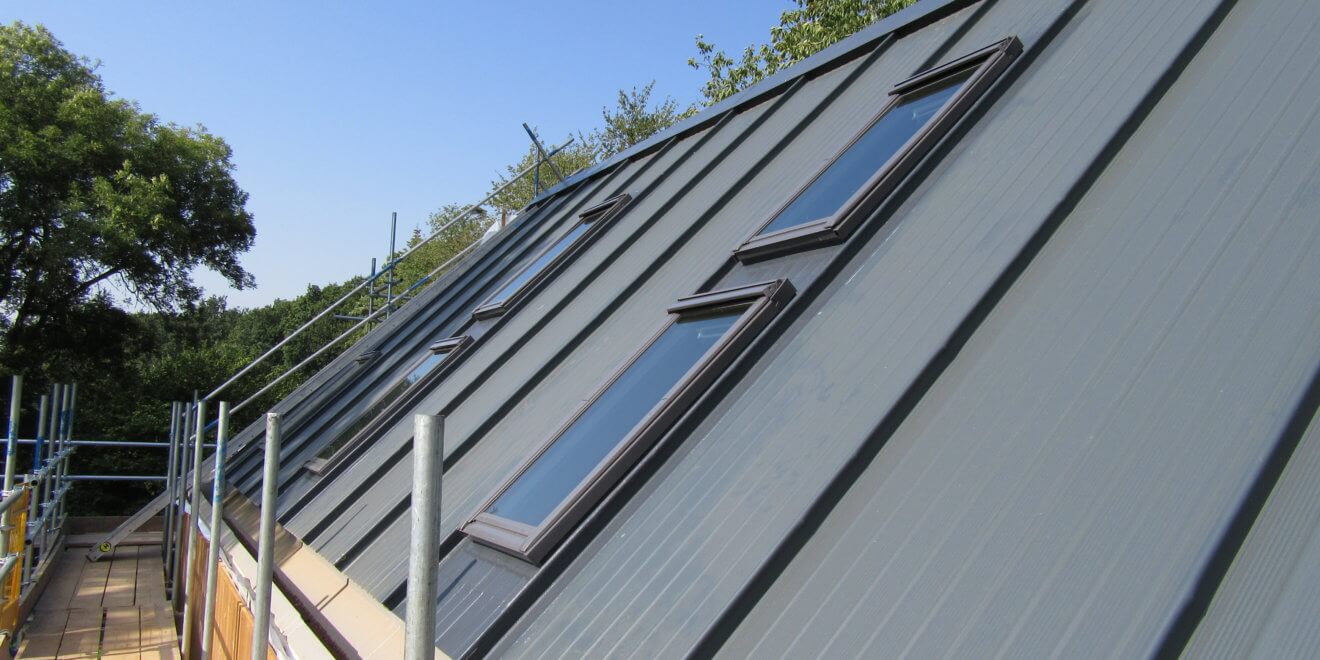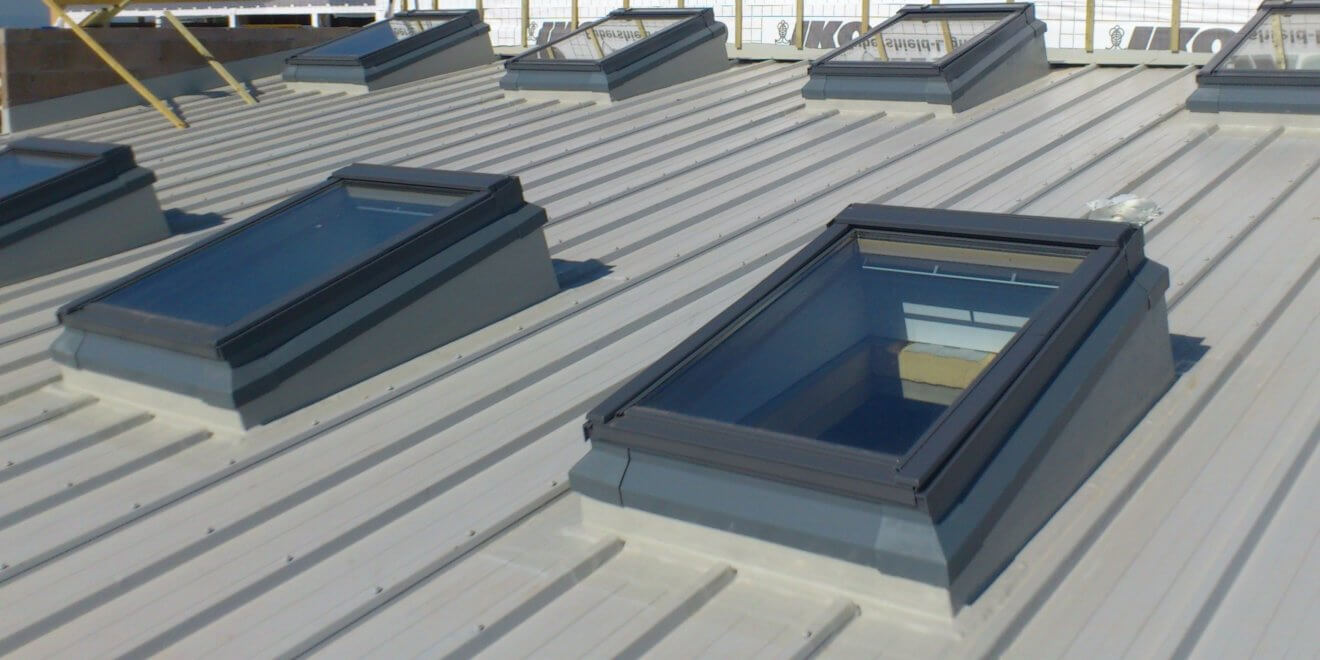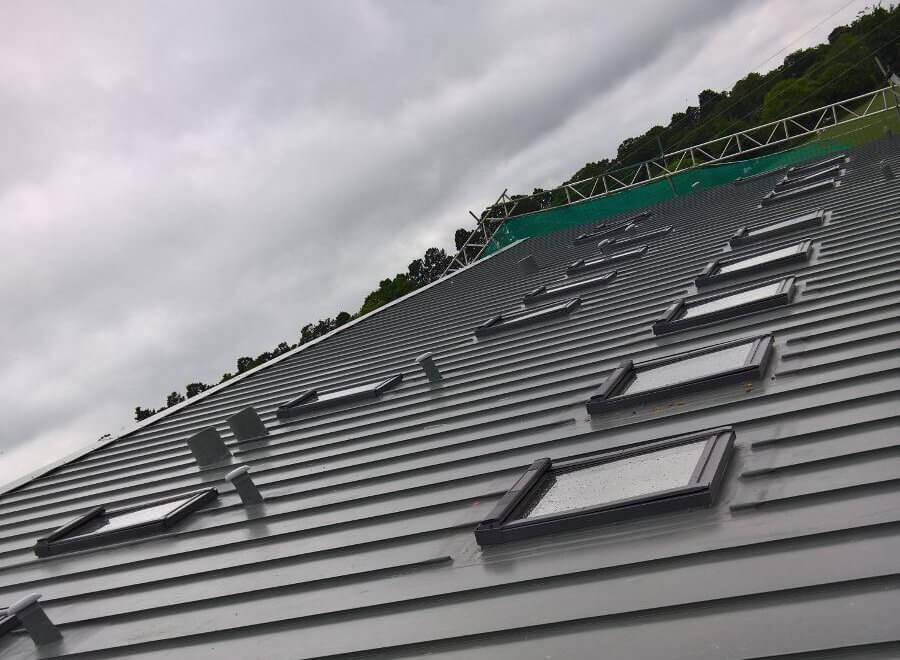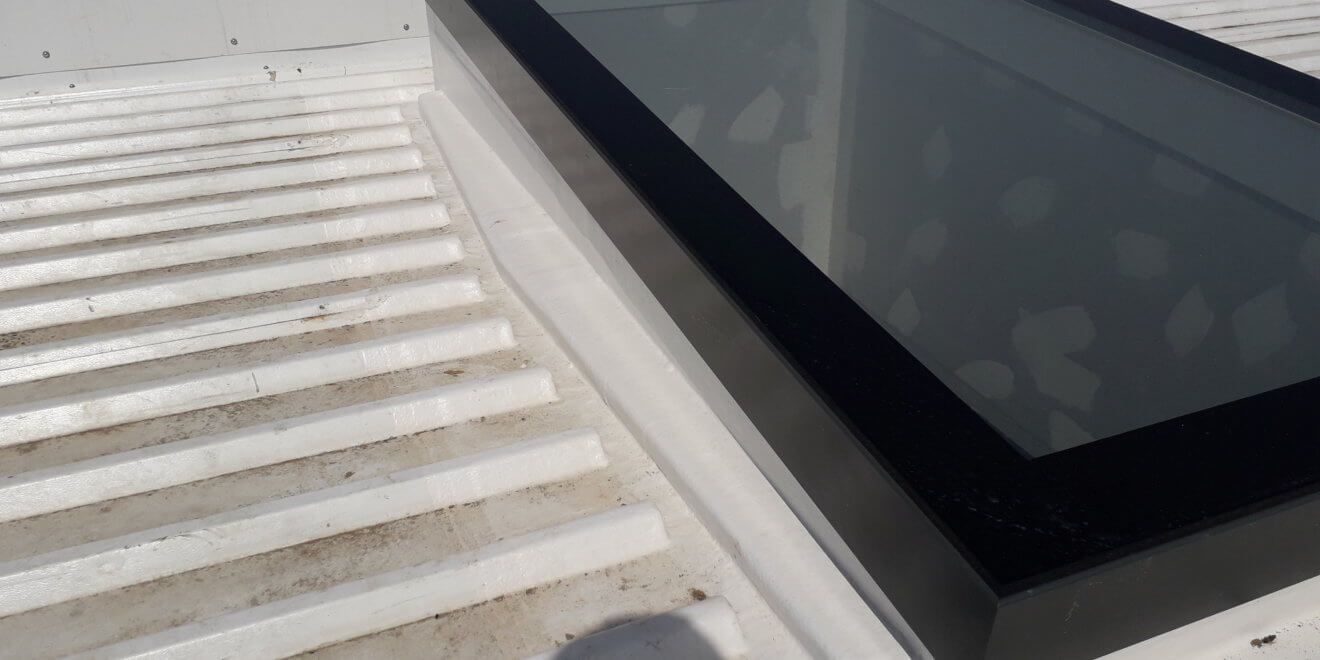Rooflights and roof windows can be extremely beneficial for commercial buildings, however, you’ve got to know how to waterproof a rooflight. After all, a rooflight should flood an interior with warm, bright sunshine on a clear day – not rainwater during a downpour.
So how do you waterproof a rooflight? As with most things, prevention is critical, and opting for expert rooflight installation from the very beginning is likely to save you a lot of time and hassle.
Not only does installing a rooflight require working at height with a big bulky item made of breakable glass. It also requires putting a hole in the roof. The entire process, from planning through to cutting, installing and finishing, is best left to people with the right skills and plenty of experience.
Plus, having a rooflight installed by a professional will give you additional peace of mind that the project is being carried out by an expert who can ensure the result is weatherproof and looks professional – and their work should be backed by a guarantee.
Why is my rooflight leaking?
There are many reasons why a rooflight might start leaking. For example, it could be the result of an inadequate installation, or the rooflight may have been damaged after being exposed to high winds or suffering an impact. In some cases, a leak can even turn out to be not a leak at all, but a condensation problem.
Whatever the reason for a leaking rooflight, getting the problem fixed needs to be a top priority. Even a small leak can be a source of inconvenience for a building’s occupants, and it could damage expensive equipment or decor. Problems like damp and mould can also result from a leaking skylight, leading to uncomfortable conditions and potential health hazards.
It’s also important to note that even if you have what seems like a tiny leak right now, without an expert to correctly diagnose the problem and make the necessary repairs, it’s likely that the problem will only get worse.
This is where our teams at Jones and Woolman UK excel. We are able to assess and solve such leaks and potential problems and act quickly to ensure your rooflights and roofs are leak free for years to come with our peace of mind 25-year warranty on all works carried out.
Methods for waterproofing rooflights
As with any type of building penetration, there are several ways to waterproof a rooflight, and the right choice will depend on the roof construction, as well as the finished appearance that you wish to achieve.
In residential buildings with pitched roofs, for example, roof window and rooflight installations are typically sealed using flashings, with tiles layered carefully over the top for a weatherproof finish.
However, this method won’t work on most commercial buildings – particularly those with flat or low-pitched roofs and no roof tiles. So other techniques will be required to waterproof rooflights in commercial applications. Although a waterproof rooflight can be achieved with materials such as EPDM rubber, or even traditional roofing felt, GRP is one of the best ways to ensure a leak-free result that will look good and last for many years with minimal maintenance.
GRP roofing systems for leak-free skylights
As experts in GRP roofing systems, the team and Jones and Woolman UK have extensive experience in installing waterproof rooflights for a wide range of commercial buildings, including shopping malls, factories and even sports stadia.
Our system starts with load-bearing upstands, which can be custom-made to fit your rooflights perfectly. The upstands can incorporate our unique inclined shape, which means rooflights and roof windows can be installed on roofs with very low pitches, and even flat roof rooflights can be accommodated.
We also use a specialist weathering system comprising a flexible, reinforced cold-applied liquid that works well with most types of cladding, as well as single-ply roofs. It creates a smooth, clean finish that will provide years of leak-free service – and a skylight that lets only the sunshine in.
Waterproof rooflight installations from Jones and Woolman UK
Whether you’re thinking about adding rooflights to a commercial building, or need repairs to stop a leak, the team at Jones and Woolman UK can help. We’ve been carrying out commercial roof repairs and building penetrations work for over 40 years, and all of our work is backed by a comprehensive 25-year warranty.
To find out more about our GRP roofing solutions, or discuss your project with one of our experts, please get in touch.
